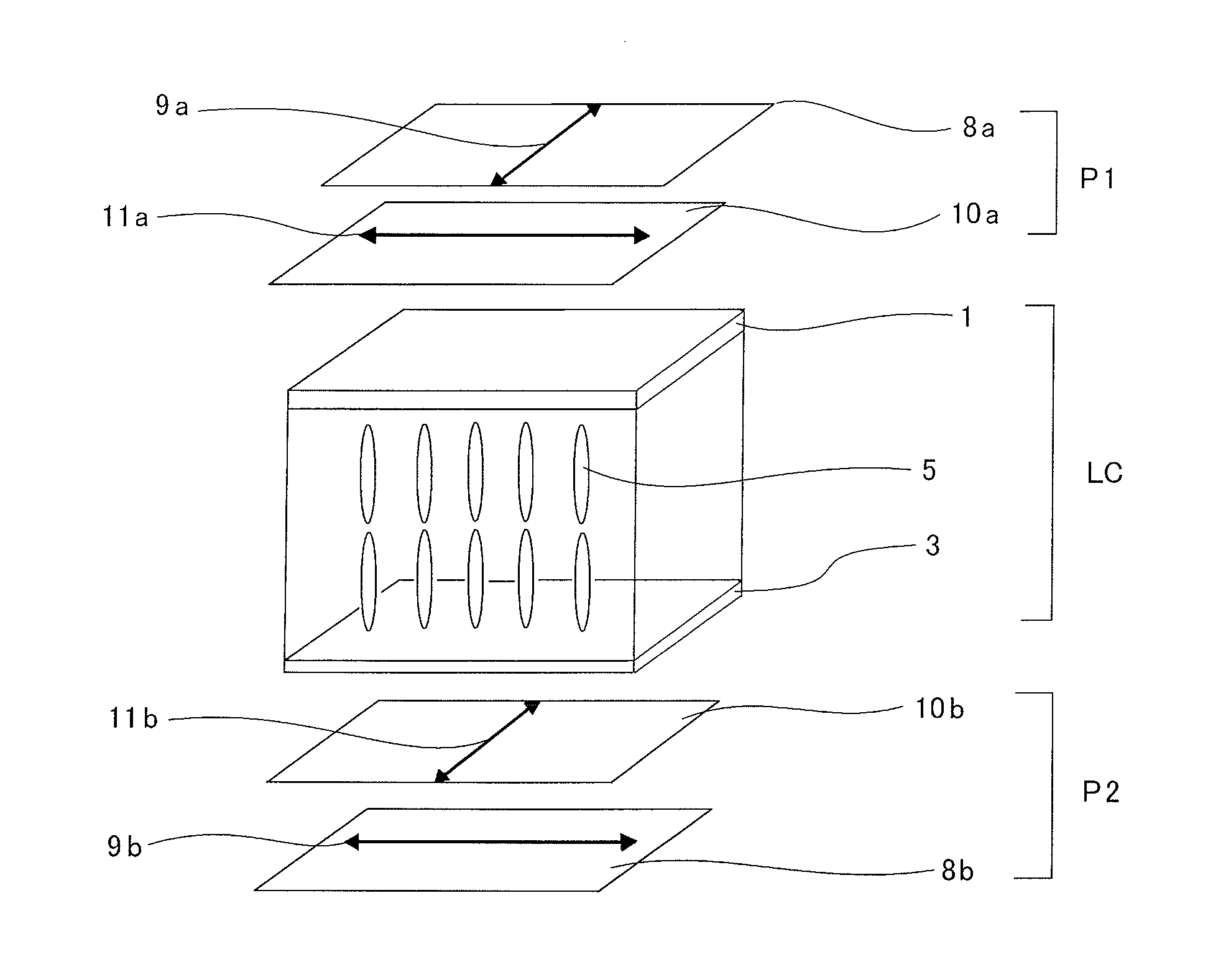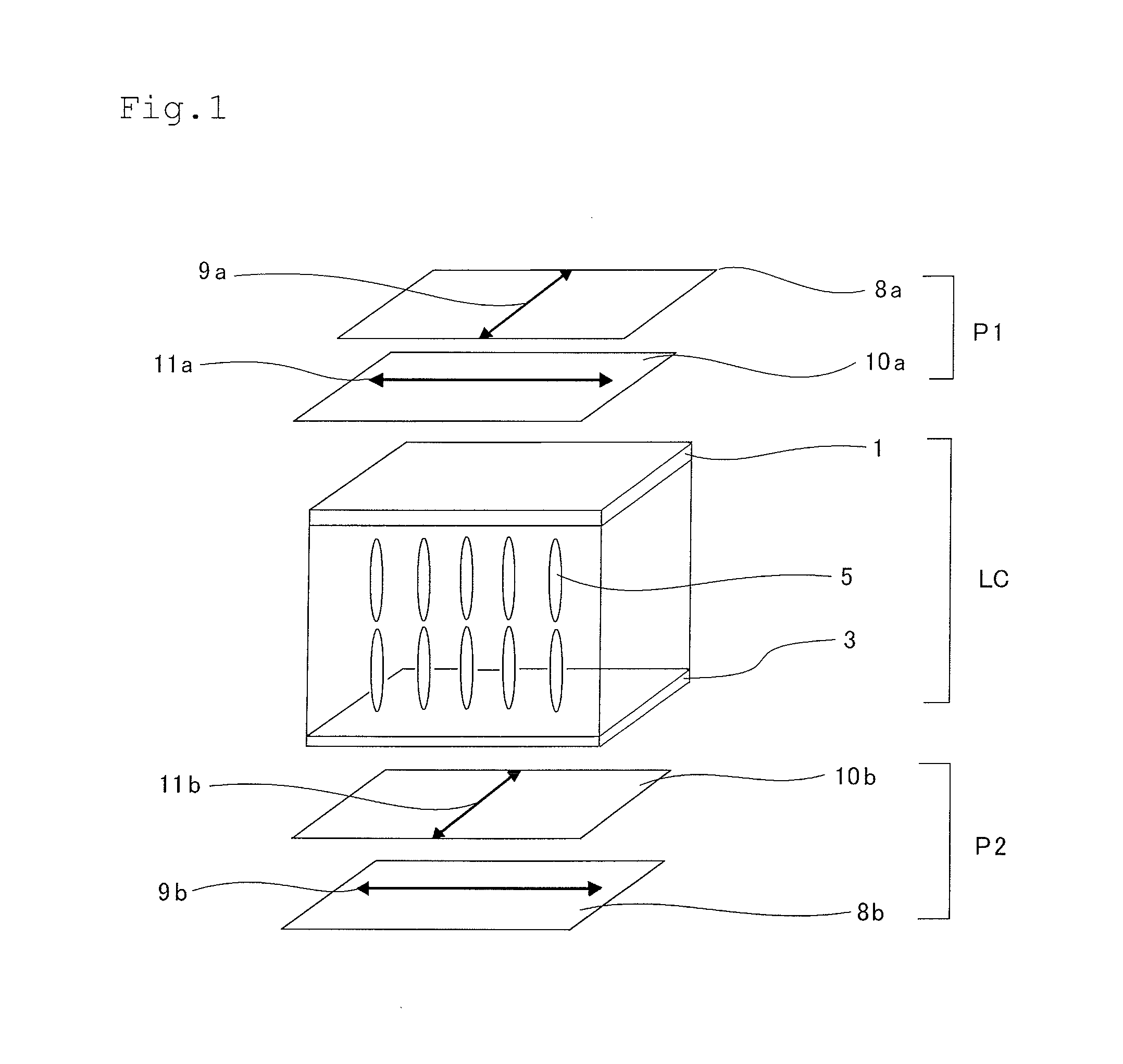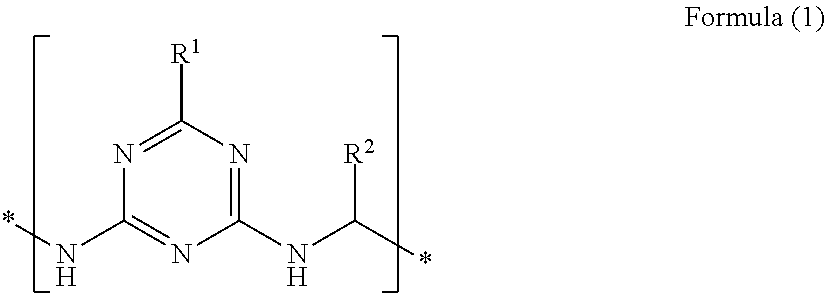Cellulose acylate film and method for manufacturing the same, retardation film, polarizing plate, and liquid crystal display device
a technology of cellulose acylate film and retardation film, which is applied in the direction of polarizing elements, instruments, optical elements, etc., can solve the problems of low redissolution properties of cellulose acylate films and dissatisfaction with so as to improve the humidity dependency suppress the fluctuations of re and rth, and improve the effect of redissolution properties
- Summary
- Abstract
- Description
- Claims
- Application Information
AI Technical Summary
Benefits of technology
Problems solved by technology
Method used
Image
Examples
synthesis example 1
Synthesis of Compounds A to D
[0222]Compound A was synthesized using, as raw materials, 20 g of benzoguanamine and 73 g of benzaldehyde and the following solvent and catalyst under other manufacturing condition according to the following method.
[0223]p-Toluenesulfonic acid monohydrate (0.5 g, 2.6 mmoles) was added in a mixture of benzoguanamine (20 g, 107 mmoles) and benzaldehyde (73 g, 690 mmoles) with stirring, and the mixture was refluxed under heating for 3 hours. After cooling to room temperature, the reaction mixture was gradually added to hexane (300 mL), and a deposit was collected by means of filtration and then washed with hexane. A solution of the resulting crude product having been redissolved in ethyl acetate was added dropwise to hexane, thereby achieving reprecipitation. The product was collected by means of filtration and then dried.
[0224]As a result, there was obtained desired Compound A (yield: 25.1 g, percent yield: 85%). A weight average molecular weight of Compou...
example 1
(Fabrication of Cellulose Acylate Film)
[0230]To 100 parts by mass of a cellulose acylate described in the following Table 2, the foregoing Compound A was added in an addition amount (4% by mass) described in the following Table 2, and the mixture was further mixed with a solvent composed of 410 parts by mass of methylene chloride and 45 parts by mass of methanol, thereby preparing a cellulose acylate (specifically, cellulose acetate) solution. This solution was cast using a band casting machine, and the resulting web was stripped off from the band and then stretched in a ratio of 35% in the TD direction (film width direction) under a condition at 140° C., followed by drying to fabricate a cellulose acylate film (specifically, cellulose acetate) film having a film thickness of 50 μm. This was used as a film of Example 1.
PUM
| Property | Measurement | Unit |
|---|---|---|
| optical performance | aaaaa | aaaaa |
| thickness | aaaaa | aaaaa |
| humidity | aaaaa | aaaaa |
Abstract
Description
Claims
Application Information
 Login to View More
Login to View More - R&D
- Intellectual Property
- Life Sciences
- Materials
- Tech Scout
- Unparalleled Data Quality
- Higher Quality Content
- 60% Fewer Hallucinations
Browse by: Latest US Patents, China's latest patents, Technical Efficacy Thesaurus, Application Domain, Technology Topic, Popular Technical Reports.
© 2025 PatSnap. All rights reserved.Legal|Privacy policy|Modern Slavery Act Transparency Statement|Sitemap|About US| Contact US: help@patsnap.com



